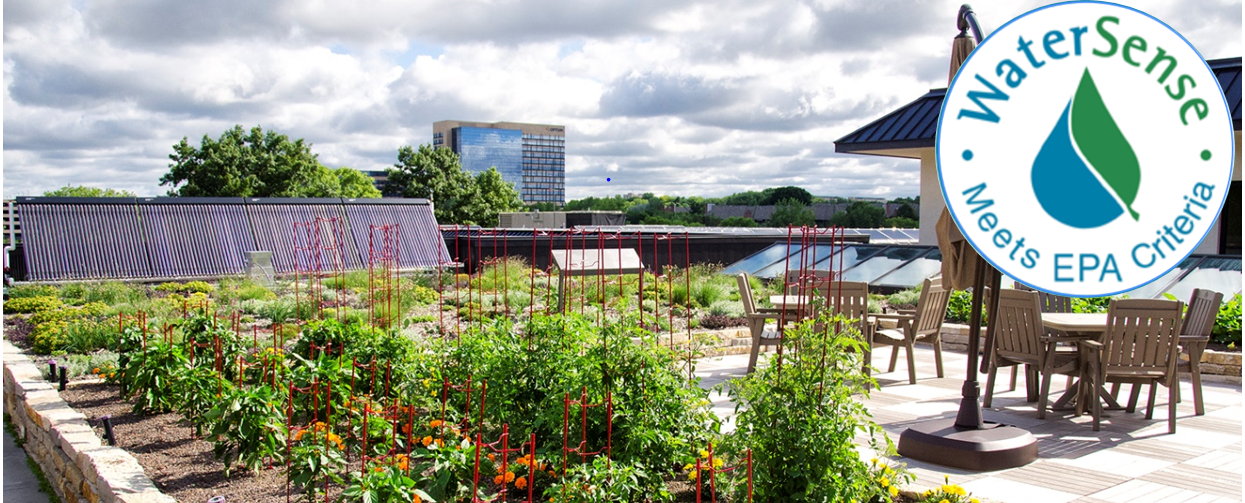As the days get longer and summer settles in, you may notice an increase in mosquitoes and sunburns – as well as outdoor water use. “Peak water use season” describes the time of year when water use is at its highest, which usually occurs in early August, depending on where you live. Peak seasonal water use is typically three to five times as much as winter water use. It’s a great time to find new ways to save water indoors and out.
The average American home uses about 260 gallons of water per day; however, during peak season the same household can use about 1,000 gallons of water in a day. In some instances peak daily use can be as high as 3,000 gallons a day — more than 10 times the average daily use. That’s equivalent to a garden hose running open for nearly 8 hours or enough water to supply the same home for sixteen days!
The implications for commercial and public spaces are just as alarming and lead to an increase in groundwater depletion, as water is being withdrawn from aquifers at a rate much greater than the recharge rate.
“During the winter we can supply all of our city water needs with only three wells,” explains Steve Kernik, Environmental Planner with the City of Woodbury, “but during the summer we need 17 to meet peak water demands.” Even with increased water rates and watering restrictions in place, summer water use continues to climb, especially in the new developments where built-in irrigation systems are the norm. At the same time, cities struggle to manage stormwater runoff from roads and developed areas.
Like Woodbury, cities all across the country are concerned with groundwater availability and are quickly ramping up their efforts to reduce municipal water use. Water conservation within the irrigation industry has been a major step forward when it comes to improvement opportunities.
Recognizing the need to conserve water, the EPA developed a program called WaterSense® that addresses indoor and outdoor water use. The WaterSense Water-Smart Landscapes guide (14 pp, 2.3 MB) offers ideas for choosing the right plants, supporting soil health, and proper maintenance, which are keys to water-smart landscapes.
One technique city planners and residents are adopting to conserve water is the use of SMART controllers, which save 30-50% of landscape irrigation water. Although irrigation systems are often blamed for groundwater depletion, they have the potential to be sustainable with a water-smart mindset.
In fact, the EPA recommends using WaterSense® and Irrigation Association Certified irrigation professionals to ensure systems are properly sized, located, installed and maintained.
Water in Motion employs WaterSense® and Irrigation Association certified professionals. We work with industry-leading landscape, architectural and engineering firms to help save their clients water and money with professional water management consulting, efficient irrigation design, the right components and smart controllers. Water in Motion also offers construction administration services to help ensure outdoor water management installation is done right.



